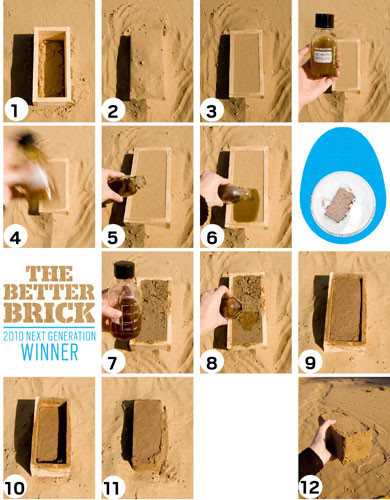
The winner of the 2010 Metropolis Next Generation Design Competition proposes a radical alternative to the common brick: don’t bake the brick; grow it. In a lab at the American University of Sharjah, in the United Arab Emirates, Ginger Krieg Dosier, an assistant architecture professor, sprouts building blocks from sand, common bacteria, calcium chloride, and urea (yes, the stuff in your pee). The process, known as microbial-induced calcite precipitation, or MICP, uses the microbes on sand to bind the grains together like glue with a chain of chemical reactions. The resulting mass resembles sandstone but, depending on how it’s made, can reproduce the strength of fired-clay brick or even marble. If Dosier’s biomanufactured masonry replaced each new brick on the planet, it would reduce carbon-dioxide emissions by at least 800 million tons a year. “We’re running out of all of our energy sources,” she said in March in a phone interview from the United Arab Emirates. “Four hundred trees are burned to make 25,000 bricks. It’s a consumption issue, and honestly, it’s starting to scare me.” Read more…
